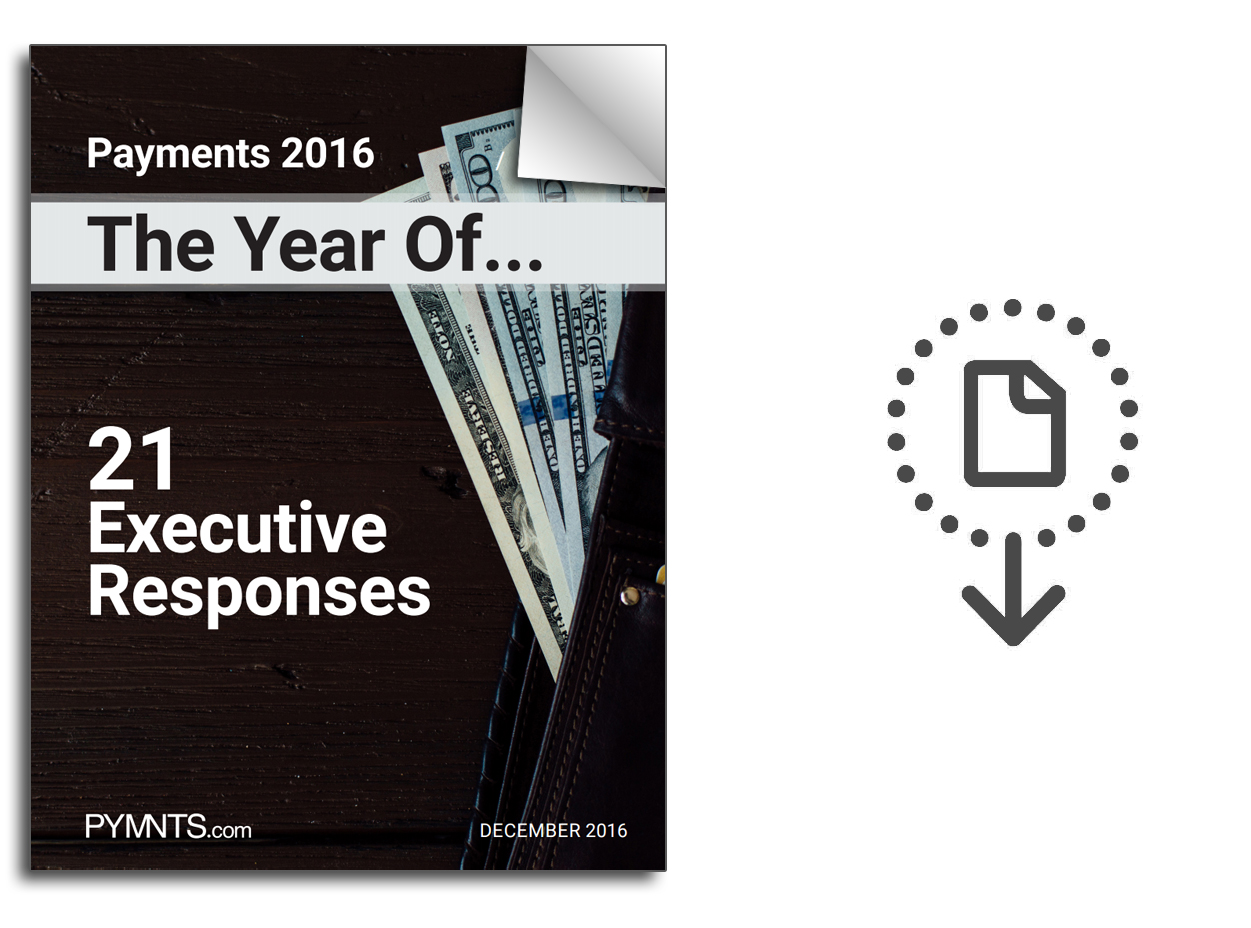Payments 2016: The Year Of Omnichannel Commerce

PYMNTS consulted 21 payments executives from across the industry to share their insights on the biggest takeaways from 2016 as part of the “Payments 2016, The Year Of…” eBook. We posed the same question to each executive:
If you had to answer the question, Payments was the year of …, how would you answer, and how does your answer change your world — and the world of payments, more broadly?
Here is the response from Gijs op de Weegh, COO of Payvision and Acapture…
Payments 2016: The Year Of Omnichannel Commerce
When a buzzword starts to sound outdated, we know it has become mainstream. Omnichannel is no longer a trend or a prediction — it’s the new retail reality.
For years, analysts and thought leaders have been predicting a future of seamless, omnichannel commerce, citing the emergent role of mobile commerce, shifting consumer patterns and the aggregation of data to recognize more accurate buying behavior. All these elements are still absolutely key to tomorrow’s retail landscape. So why was 2016 the year omnichannel commerce came to fruition? Because we’ve stopped talking about channels altogether.
The Future Is Now
It might sound like a cliché, but the reality is that the “future landscape” we’ve all been planning for has arrived with a bang. Retailers are acutely aware that omnichannel is no longer an objective — it is the very groundwork to success. Commerce is not limited to channels or platforms, countries or continents. Consumers aren’t just present on mobile, desktop or in-store, and they aren’t domestic or cross-border. Consumers are everywhere, at all times. Retailers are adapting to this new global mindset, and fast.
Retail Is International, Physical, And Virtual
Alibaba’s Singles’ Day in China, generating $17 billion in one day this year, was the culmination of a global omnichannel year in action. Only a couple of years ago, it was solely a Chinese digital ecommerce event, largely unheard of in Western markets. Now a third of all Singles’ Day sales were generated from foreign merchants and consumers.
Moving from the “traditional” marketplace model of Singles’ Day, this year Alibaba bridged the online and offline through coupons and other in-store traffic-generating initiatives. On top of this, we saw a new virtual reality slant, optimizing a Pokémon Go–style game for customers to redeem prizes and offers. This wider casting of the net, a step back from pure digital to also physical on the single most lucrative commerce day in the world, epitomizes the year of omnichannel.
Contrary to decade-old belief, future retail is not simply electronic — it is also physical, virtual and international. This theme will undoubtedly ripple through to 2016 holiday sales in the U.S., Europe and beyond.
The Year Of The Consumer
The year of omnichannel is another name for the year of the consumer. Shifting behavior in 2016 dictated how retailers crafted their future strategies, forcing them to think beyond channels and platforms, visits or sessions. The end-to-end consumer journey is influenced by countless connections, touch points and conversations. These interactions are now on customers’ terms and timeframes and in their comfort zones. The customer will interact with a brand multiple times before making the decision to purchase, rendering the final channel far less significant than the entire journey.
The age of aggressive sales has passed, and from its ashes the empowered consumer has risen, deciding how, when and where they will make a purchase. To sell effectively to this consumer set, merchants must first identify and locate their customers, engage with them and bring them a meaningful, fulfilling user experience. Maximizing revenue with this flexible, open mindset can only be achieved through data.
A Data-Driven Payments Landscape
Each customer leaves a specific digital and physical footprint, giving valuable insight into their preferences and behavior. Aggregating this data on a larger scale illustrates patterns and trends across specific subsets of consumers. This information has been collected for years, but when the Big Data was first trending, everyone was searching for it but few knew how to optimize it. In 2016, data was being used in more intelligent ways, predicting consumer demand. The largest harvesters of data, the social networks and major search engines, finally know what you want before you do.
This powerful information was the key to the modern consumers’ brain — it is the means to keep the customer in control by presenting them exactly what they want, at precisely the right time, under their perfect conditions, while also optimizing budgets and saving money on the bottom line. Big Data is another outdated term, as today it is a given in the retail industry.
So 2016 was the year of omnichannel, but how do we know? Because omnichannel itself as a concept or strategy is fading into the distance. We’ve spent time predicting it, discussing it and advising on it, and now merchants are doing it. And it’s exactly at that point that it’s no longer a buzzword, it’s a rule. Omnichannel is the new retail reality.
. . . . . . . . . . . . . .

